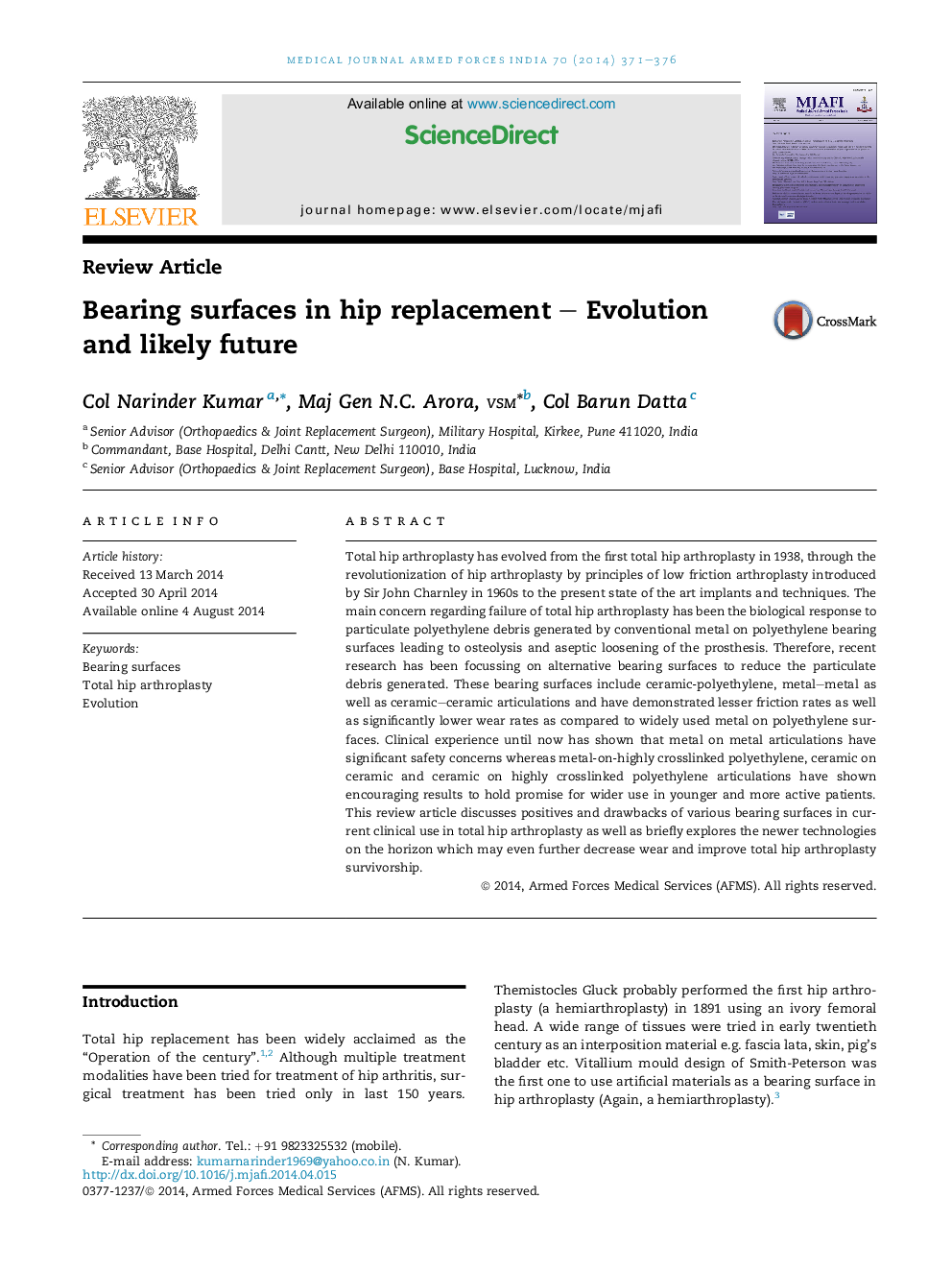| Article ID | Journal | Published Year | Pages | File Type |
|---|---|---|---|---|
| 3161251 | Medical Journal Armed Forces India | 2014 | 6 Pages |
Total hip arthroplasty has evolved from the first total hip arthroplasty in 1938, through the revolutionization of hip arthroplasty by principles of low friction arthroplasty introduced by Sir John Charnley in 1960s to the present state of the art implants and techniques. The main concern regarding failure of total hip arthroplasty has been the biological response to particulate polyethylene debris generated by conventional metal on polyethylene bearing surfaces leading to osteolysis and aseptic loosening of the prosthesis. Therefore, recent research has been focussing on alternative bearing surfaces to reduce the particulate debris generated. These bearing surfaces include ceramic-polyethylene, metal-metal as well as ceramic-ceramic articulations and have demonstrated lesser friction rates as well as significantly lower wear rates as compared to widely used metal on polyethylene surfaces. Clinical experience until now has shown that metal on metal articulations have significant safety concerns whereas metal-on-highly crosslinked polyethylene, ceramic on ceramic and ceramic on highly crosslinked polyethylene articulations have shown encouraging results to hold promise for wider use in younger and more active patients. This review article discusses positives and drawbacks of various bearing surfaces in current clinical use in total hip arthroplasty as well as briefly explores the newer technologies on the horizon which may even further decrease wear and improve total hip arthroplasty survivorship.
